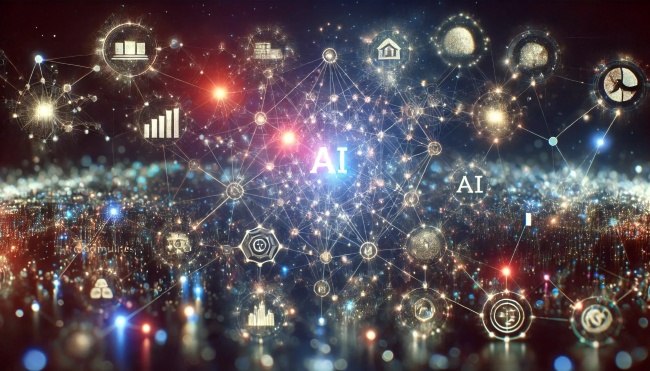Securing Long-Term Stability in Volatile Markets
In today’s unpredictable economic landscape, businesses and affluent families face mounting challenges—market volatility, technological disruptions, and global uncertainties. Traditional metrics like efficiency, once the gold standard, now fall short in ensuring long-term stability. Enter AI business resilience metrics, a transformative approach that harnesses artificial intelligence to measure and bolster adaptability and endurance. This article dives into how these metrics redefine success, offering actionable insights and real-world examples for those aiming to thrive amidst chaos.
What Are AI Business Resilience Metrics?
AI business resilience metrics are advanced indicators that evaluate an organization’s ability to adapt and recover from disruptions. Unlike efficiency-focused metrics, they prioritize sustainability and flexibility. Examples include the breakthrough rate—tracking innovation frequency—and the knowledge integration index—assessing how well new insights shape decisions. AI amplifies these metrics by processing vast datasets to predict risks and optimize strategies. As Janice Diaz emphasizes, “Flexibility is the backbone of resilience in wealth management” (LinkedIn), a principle AI brings to life.
Why Traditional Metrics Fall Short
Efficiency metrics often trap organizations in short-term thinking, sidelining innovation for cost-cutting. In volatile markets, this rigidity can spell disaster. A 2025 PwC survey revealed that 75% of family offices now favor resilience over efficiency, a shift driven by the need to weather unpredictability. Similarly, a 2024 BCG report found that companies using resilience metrics boasted a 20% higher survival rate during downturns. These findings echo a broader truth: adaptability, not optimization, is the key to enduring success.
Key AI Business Resilience Metrics
Here’s a snapshot of critical metrics enhanced by AI:
| Metric | Definition | Benefit |
|---|---|---|
| Breakthrough Rate | Frequency of significant innovations | Fuels continuous improvement |
| Knowledge Integration Index | Use of new insights in decision-making | Leverages data for smarter choices |
| Cash Flow Durability | Ability to sustain cash flow in downturns | Ensures financial stability |
| Crisis Recovery Time | Speed of recovery post-crisis | Reduces losses and downtime |
These metrics empower businesses to innovate and families to safeguard wealth, all while AI provides real-time insights.
Implementing AI Business Resilience Metrics
Adopting these metrics demands a clear strategy:
- Set Resilience Goals: Define what stability means—portfolio endurance or rapid innovation.
- Choose Metrics: Select indicators like cash flow durability that match your objectives.
- Integrate AI Tools: Platforms like eFront can track metrics dynamically (eFront).
- Align Incentives: Reward resilience-driven behaviors, not just efficiency gains (The Coordination Problem and How AI Can Solve It).
- Adapt Continuously: Use AI insights to refine approaches as conditions shift.
This framework ensures organizations remain agile and future-ready.
Real-World Impact and Research
The power of AI business resilience metrics shines in practice. A family office, guided by AI predictions, pivoted to resilient sectors like sustainable real estate, preserving wealth during a recession (Campus for Family Business). Lean startups, meanwhile, leveraged AI-native metrics to hit $3.5 million per employee in productivity. Research backs this up: a UBS report projects that 80% of high-net-worth individuals will prioritize resilience by 2030. For deeper strategies, explore Navigating the AI Revolution: Strategies for Wealth and Career Resilience.
Conclusion
In an age of relentless change, AI business resilience metrics are more than a trend—they’re a necessity. By shifting focus from efficiency to adaptability, businesses and affluent families can build legacies that endure. Start today: redefine your metrics, harness AI, and secure your future.
FAQ
- What are AI business resilience metrics? AI-powered indicators measuring adaptability and recovery.
- How do they differ from traditional metrics? They emphasize long-term resilience over short-term gains.
- Why are they vital? They equip organizations to thrive in volatility.
- How to begin? Set goals, pick metrics, and integrate AI tools.

